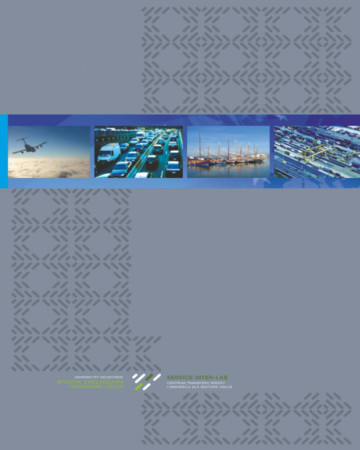
ISSN: 1644-275X
eISSN: 2353-3005
OAI
DOI: 10.18276/ptl.2017.38-02


Issue archive /
nr 2 (38) 2017
Gleichgewichte auf den Transport-, Verkehrs- und Logistikmärkten
(Equilibria in the Transport, Transport and Logistics Markets)
| Authors: |
Hermann
Witte
Hochschule Osnabrück |
| Keywords: | equilibrium equilibrium theory equilibrium models inequilibrium models transport market |
| Data publikacji całości: | 2017 |
| Page range: | 11 (15-25) |
Abstract
The traditional interpretation of economic equilibrium is not successful in realizing market equilibria. The main argument against the traditional interpretation of economic equilibrium is the normally made assumption of unrealistic pure competition. A realistic idea is the modern interpretation of economic equilibrium. This interpretation needs no unrealistic assumptions and no high level of mathematic understanding. The modern interpretation of economic equilibrium leads to total quantitative- and valuebased market equilibria. All three partial markets (the goods, the money and the labor market) are in equilibrium, when all economic units acting on these markets are in equilibrium. The advantage of the modern interpretation of economic equilibrium is that it is no utopia but a “topia”. The realization leads to overcome economic crises and to steady growing welfare in spite of worldwide low resources. The only condition to realize the modern interpretation of economic equilibrium is the will to change something. It is possible to use the modern interpretation of equilibrium for transport and logistic markets.
Download file
Article file
Bibliography
| 1. | Bundesminister für Verkehr und digitale Infrastruktur: Bundesverkehrswegeplan 2030 (Entwurf März 2016) (2016), Berlin. Heruntergeladen von: www.bvwp2030.de (12.10.2016). |
| 2. | Jaeger, K. (1981). Gleichgewicht, ökonomisches, in: Handwörterbuch der Wirtschaftswissenschaft, 3. Bd. Stuttgart u.a., S. 671–699. |
| 3. | Keynes, J.M. (2009). Allgemeine Theorie Allgemeine Theorie der Beschäftigung, des Zinses und des Geldes, 11. Aufl., Berlin. |
| 4. | Marx, K. (2013). Das Kapital, 1. Bd., 40. Aufl., Berlin. |
| 5. | Norén, R. (2013). Equilibrium Models in an Applied Framework. Berlin, Heidelberg. |
| 6. | Rothschild, K.W. (1981). Einführung in die Ungleichgewichtstheorie. Berlin. |
| 7. | Samuelson, P.A. (1969). Volkswirtschaftslehre, Bd. 1., 4. Aufl., Köln o.J. |
| 8. | Smith, A. (2000). The Wealth of Nations. Introduction by R. Reich, New York 2000 (Org. 17761) |
| 9. | Voigt,. F. (1973). Verkehr, Bd. I/1. Berlin. |
| 10. | Walras, L. (1874). Éléments d´économie politique pure ou théorie de la richesse sociale, Lausanne, Paris, Bale (Basel). |
| 11. | Weisman, A. (2013). Gaviotas. Ein Dorf erfindet die Nachhaltigkeit, München, Zürich. |
| 12. | Witte, H. (2013). Die nachhaltige Marktwirtschaft. Wohlstand ohne self-made Krisen? Berlin. |
| 13. | Witte, H. (2015). Sustainable Market Economy. Welfare without self-made crises? Zürich. |
| 14. | Witte, H. (2016). La economía de Mercado sustentable. Bienestar sin crisis autogenerades? Bahia Blanca. |